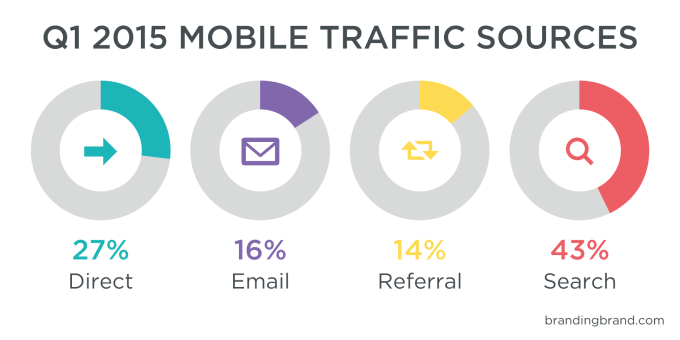
Google announced earlier this year that it was making a change to its search algorithms which would begin to factor in a website’s “mobile-friendliness” as a ranking signal – meaning that those sites which weren’t optimized for smartphones’ smaller screens would see their ranks downgraded as a result. Today, Google is flipping the proverbial switch and is rolling out its mobile-friendly update – something that could potentially affect over 40 percent of Fortune 500 websites, according to recent tests.
As Google explains today, in order for a site to be considered mobile-friendly, its text has to be readable without tapping and zooming, its tap targets need to be spaced out appropriately, and the page avoids unplayable content or horizontal scrolling. In other words, the site simply needs to be easily usable from a mobile device.
The company also clarifies that the changes will only affect a site’s search ranking on mobile devices – and it only applies to individual pages, not entire websites. It also only impacts searches done on smartphones, not tablets.

It’s surprising how common it still is to come across websites from top brands which haven’t been properly optimized for the smartphone or other smaller screens. Apparently, they do need the threat of a downgrade from Google in order to make any changes.
According to an earlier report on TechCrunch, a 2013 study said that two-thirds of the Fortune 100 were not ready for mobile search. And after running some tests this year, it appears that progress has been slow – as noted above, just over half (52 percent) of the Fortune 500 operated mobile-friendly websites ahead of Google’s update.

But the shift to mobile cannot be ignored any longer by these big brands – or anyone else. According to eMarketer, the number of smartphone users worldwide will surpass 2 billion in 2016, and will come close to hitting that mark this year. In 2015, the firm said there will be over 1.91 billion smartphone users across the globe. And by 2018, over one-third of consumers worldwide will use smartphones.
That rapid shift to mobile has impacted all businesses, Google included. The company’s bottom line is affected by how many mobile users turn to its search engine to explore the web, allowing it to serve ads against searchers’ intent. But on mobile, users have often found better ways of interacting with the content and online properties they frequent – by way of native mobile applications built especially with a mobile device’s small form factor in mind and able to take advantage of mobile OS features like push notifications, for example, to retain users’ engagement.
Meanwhile, popular mobile properties like Facebook have been cutting into Google’s ad business. eMarketer noted that Google owned half of the mobile ad market in 2013, but that would decline to 46.8 percent in 2014. Meanwhile, Facebook’s share of the market grew from 5.4 percent of global ad spending in 2012 to 21.7 percent in 2014, the firm said.
Google’s decision to force website owners to make their sites work better on mobile devices, then, isn’t just about making web searchers happier; it’s about making sure that Google can retain its position as a useful service in the age of mobile.

The advantages to making a site mobile-friendly aren’t just good for Google and consumers – they’re good for site owners, too. For sites that are mobile-optimized, search sends a number of visitors to smartphone sites and contributes to a significant portion of a website’s revenue. According to a study of 100 top mobile properties by Branding Brand, search accounted for nearly half of all smartphone traffic (43 percent) in Q1 2015, up 5 percent from the prior quarter. In addition, organic search produced 25 percent of all revenue on smartphone-optimized sites.
And mobile traffic continues to grow – smartphone visits grew 35 percent year-over-year as of Q1, the study noted. Apple devices accounted for 59 percent of all smartphone visits in the quarter, during which time 28 percent of all online revenue was generated by mobile devices.
Google says the rollout of the new algorithm begins today, and webmasters can test their sites using various tools, including the Mobile-Friendly Test or the Mobile Usability report in Webmaster Tools, for example. If a site is determined to not be mobile-friendly, Google warns that “there may be a significant decrease in mobile traffic from Google Search.” But once the changes are made, Google will automatically re-process the site’s pages.
According to a helpful FAQ on SearchEngineLand, Google’s crawling can take anywhere from a few hours to over 72 hours – but site owners can expedite the process by usingFetch as Google with Submit to Index. Then pages can be treated as mobile-friendly in ranking, Google says.

No comments:
Post a Comment